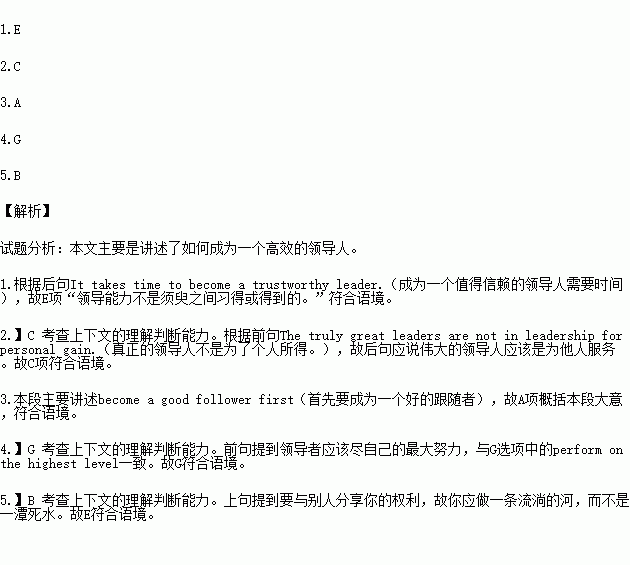题目内容
How to Become an Effective Leader
The key to becoming an effective leader is not to focus on making other people follow, but on making yourself the kind of person they want to follow. 1._______ It takes time to become a trustworthy leader.
As you prepare yourself to become a better leader, use the following guidelines to help you grow:
Don’t be self-centered.
The truly great leaders are not in leadership for personal gain. 2.________ Perhaps that is why Lawrence Bell remarked, “A man who cannot bother to do little things for others are unlikely to become a good leader.”
3.________
Rare is the effective leader who didn’t learn to become a good follower first. That is why a leadership institution such as the United States Military Academy teaches its officers to become effective followers first.
Work with excellence.
No one respects and follows mediocrity(平庸). Leaders who earn the right to lead give their all to what they do. They bring into play not only their skills and talents, but also great passion and hard work. 4._______
Give your power away.
What makes leadership so special is that you become a better leader by sharing whatever power you have, not by saving it all for yourself. 5.________ If you use your power to empower others, your leadership will extend far beyond your grasp.
A. Become a good follower first.
B. You are meant to be a river, not a pool.
C. They lead in order to serve other people.
D. Leaders help people to reach their potential.
E. Leadership isn’t learned or earned in a moment.
F. Leadership is influence, nothing more, nothing less.
G. They perform on the highest level of which they are capable.

